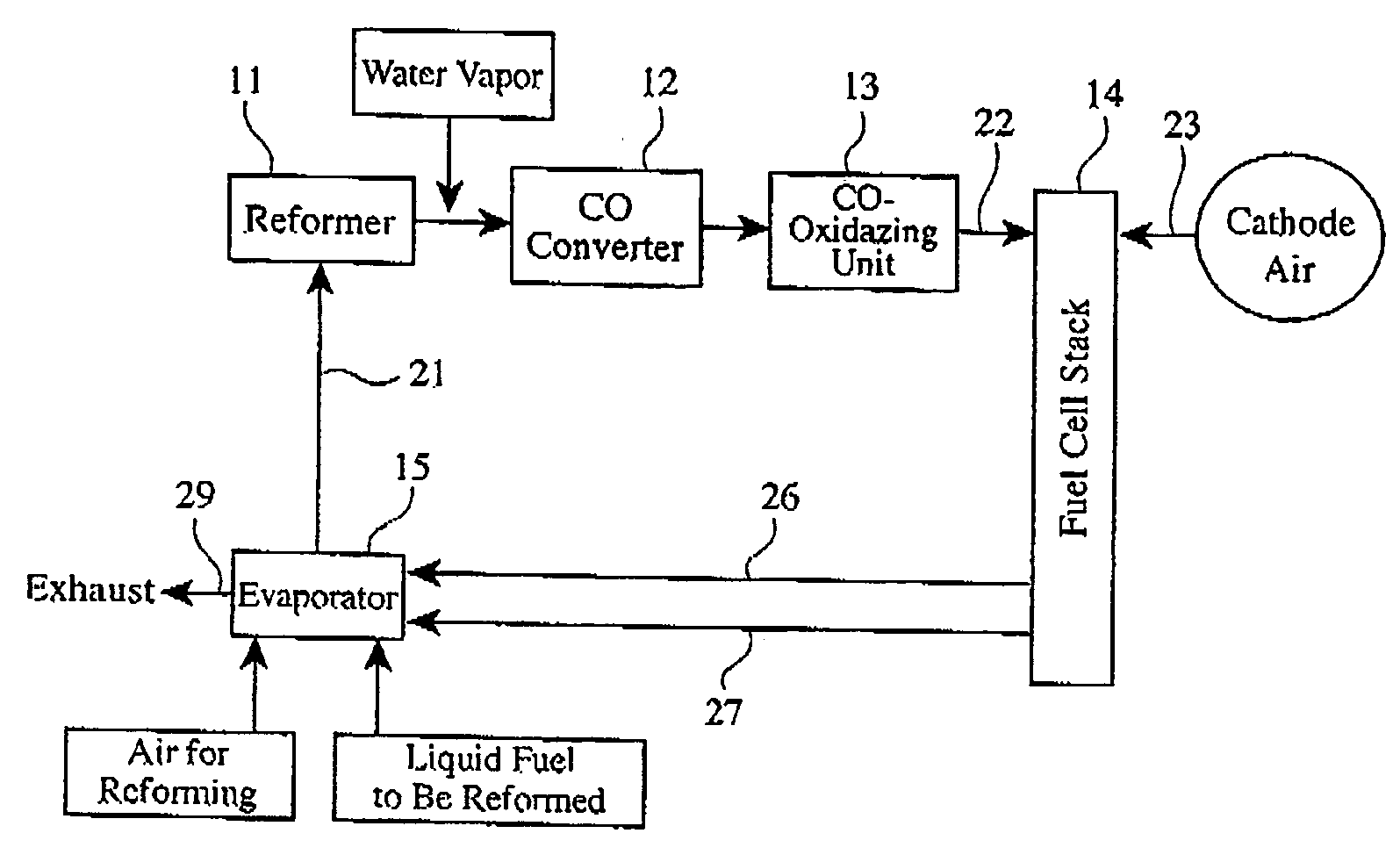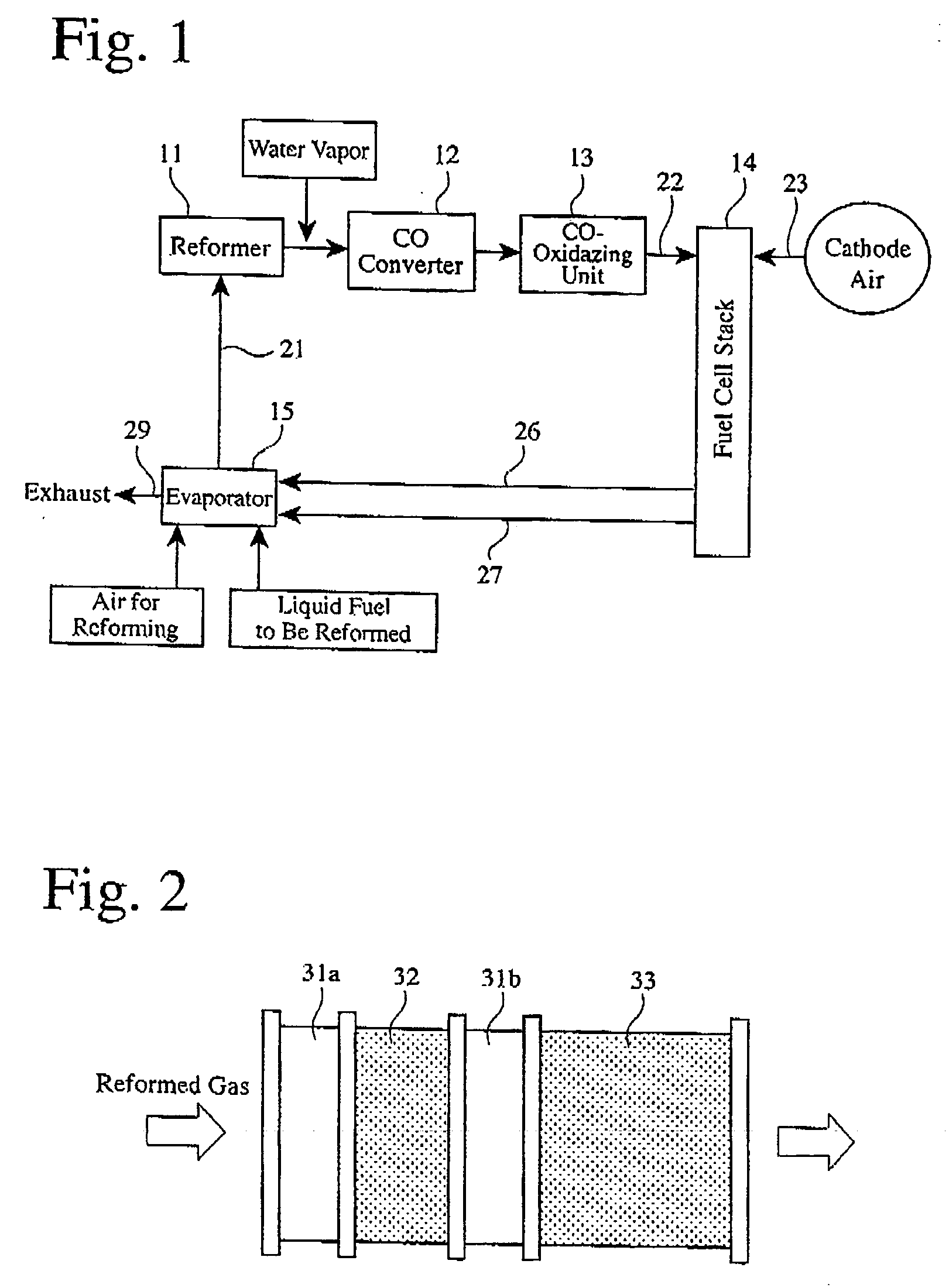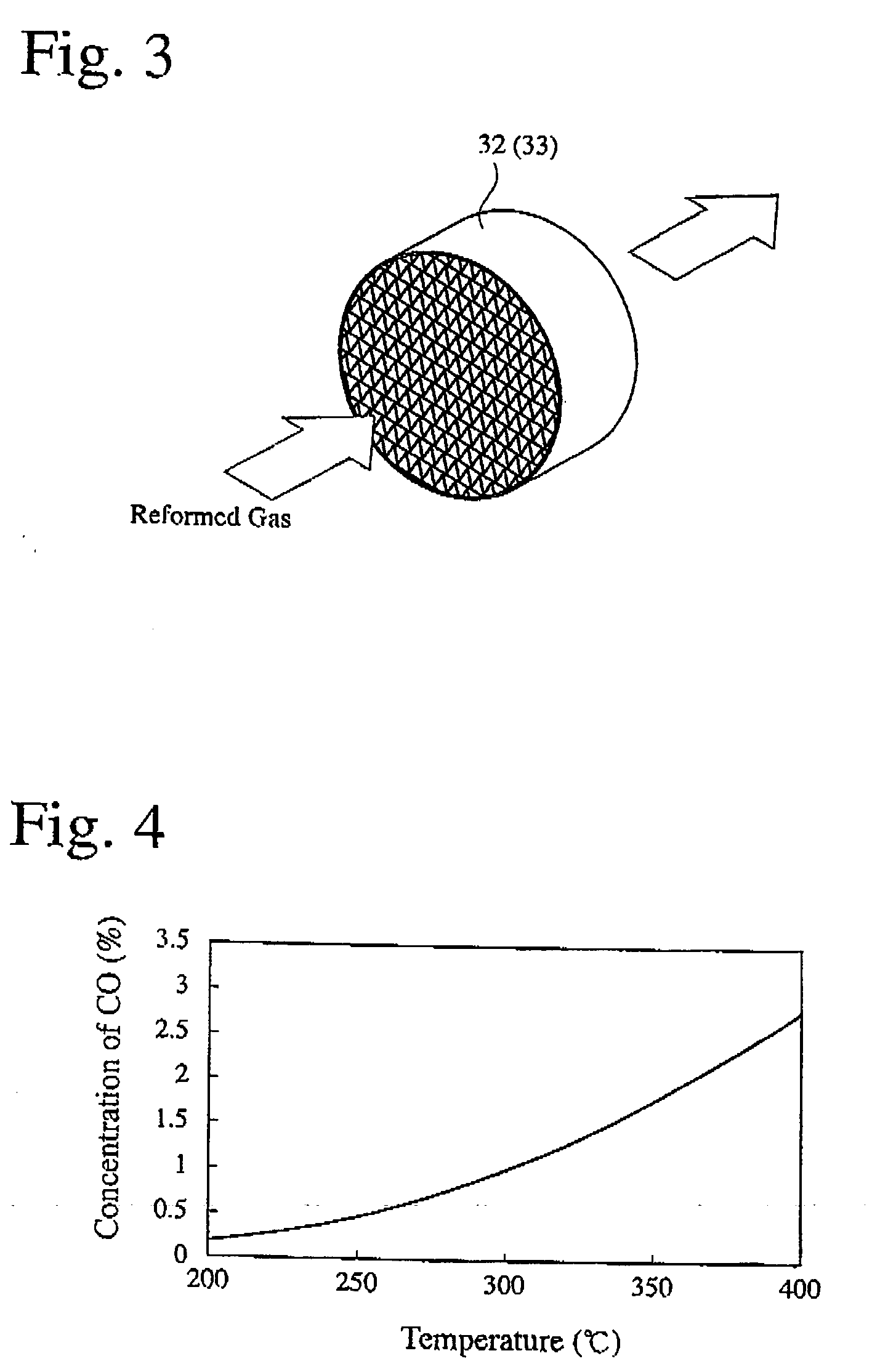Carbon monoxide converter
a converter and carbon monoxide technology, applied in the direction of combustible gas production, electrochemical generators, chemical/physical/physicochemical processes, etc., can solve the problems of reducing the conversion of co and a deteriorated catalyst, deteriorating the catalyst, and lowering the output, so as to reduce the concentration of co efficiently and prevent the effect of rapid reaction
- Summary
- Abstract
- Description
- Claims
- Application Information
AI Technical Summary
Benefits of technology
Problems solved by technology
Method used
Image
Examples
reference example 1
[0033] A shift catalyst layer was formed on walls of the honeycomb shown in FIG. 3 to produce a shift catalyst bed. The shift catalyst was composed of highly dispersed Pt supported on an alumina carrier. The shift catalyst bed was subjected to 100-hour durability tests at catalyst temperatures of 330° C., 380° C., and 450° C. to examine relations between the catalyst temperatures and the deterioration of performance. The results are shown in FIG. 5. Though substantially no changes were observed at the catalyst temperature of 330° C., the deterioration of performance was observed at the catalyst temperatures of 380° C. and 450° C. The transmission-electron-microscopic (TEM) observation of the shift catalysts subjected to the durability tests at 330° C., 380° C. and 450° C. indicates that Pt was more sintered at higher temperatures, causing deterioration due to the agglomeration of Pt on the carrier surface.
example 1
(1) Production of Carbon Monoxide Converter
[0034]FIG. 2 shows the structure of a carbon monoxide converter used herein, which comprises a heat exchanger 3 la, a shift catalyst bed 32, a heat exchanger 31b, and a shift catalyst bed 33 in this order in a flow direction of a reformed gas. The same shift catalyst as in Reference Example 1 was used. The shift catalyst bed 32 was obtained by forming a shift catalyst layer on walls of a honeycomb of 198 mm in diameter and 30 mm in length, and the shift catalyst bed 33 was obtained by forming a shift catalyst layer on walls of a honeycomb of 198 mm in diameter and 60 mm in length. The heat exchangers 31a and 31b were coiled pipes formed in the flow path of the reformed gas. Temperature sensors (not shown) were disposed at the inlets of the shift catalyst beds 32 and 33 as well as therein, and CO concentration sensors (not shown) were disposed at the outlets of the shift catalyst beds 32 and 33. Further provided was a unit (not shown) for ...
PUM
| Property | Measurement | Unit |
|---|---|---|
| temperatures | aaaaa | aaaaa |
| temperatures | aaaaa | aaaaa |
| temperatures | aaaaa | aaaaa |
Abstract
Description
Claims
Application Information
 Login to View More
Login to View More - R&D
- Intellectual Property
- Life Sciences
- Materials
- Tech Scout
- Unparalleled Data Quality
- Higher Quality Content
- 60% Fewer Hallucinations
Browse by: Latest US Patents, China's latest patents, Technical Efficacy Thesaurus, Application Domain, Technology Topic, Popular Technical Reports.
© 2025 PatSnap. All rights reserved.Legal|Privacy policy|Modern Slavery Act Transparency Statement|Sitemap|About US| Contact US: help@patsnap.com



